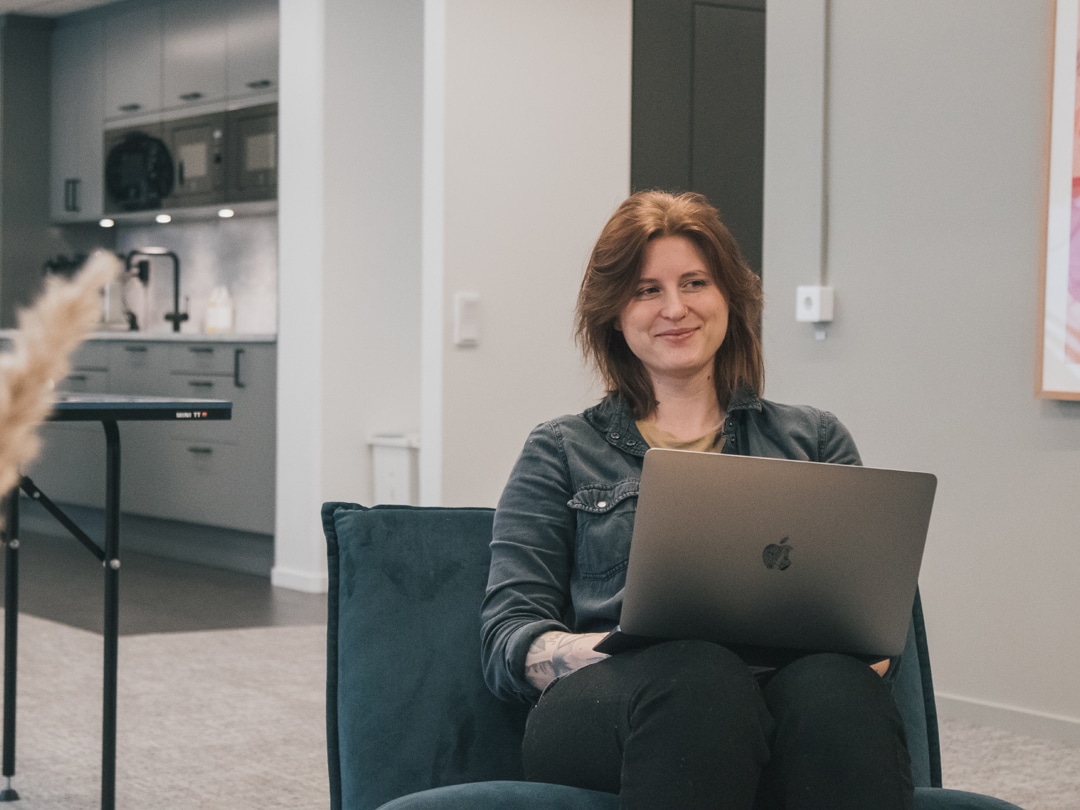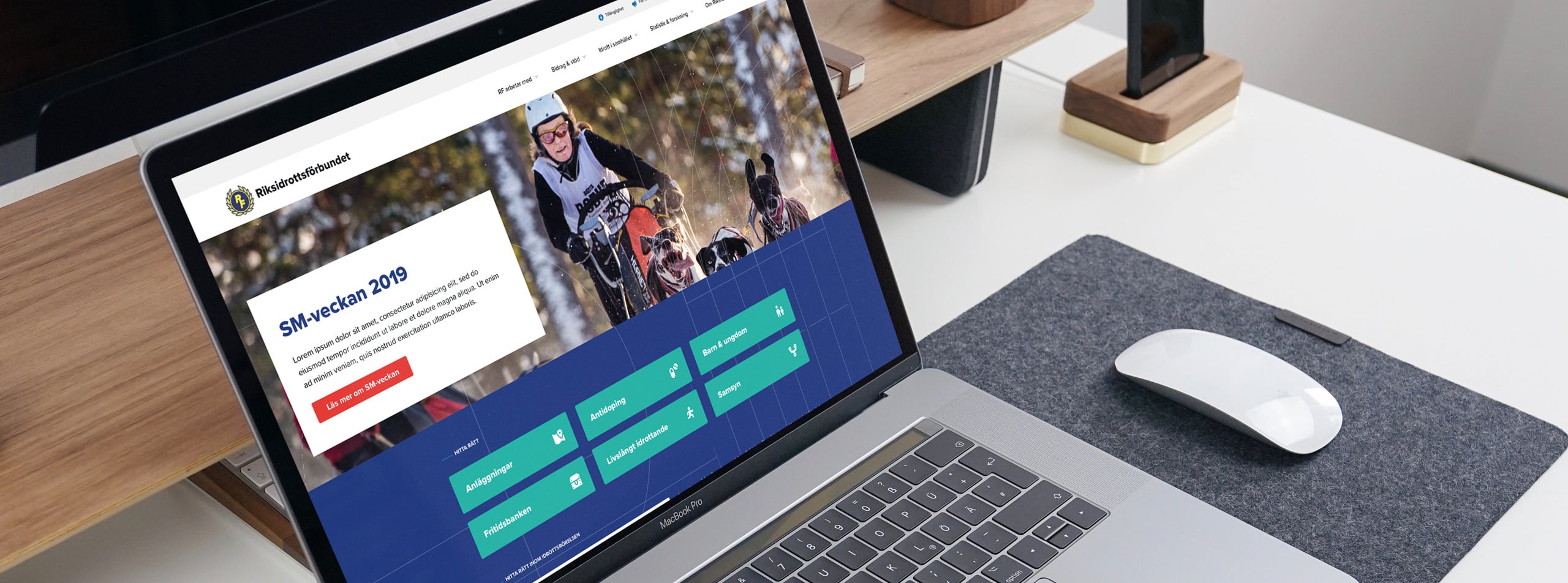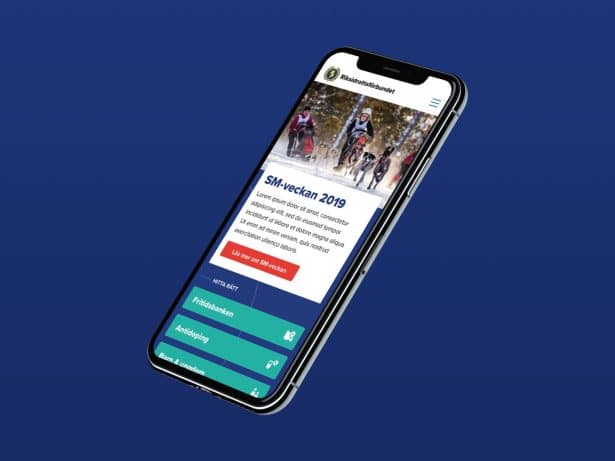Web development unites all aspects of Mild
For us at Mild, web development is about solving your technical challenges, big or small. Every project we take on is based on a combination of advanced technology and educational thinking, regardless of the size of the project, so that you as a customer can easily understand what we do and why. We look at your conditions and wishes when we consider a suitable platform together, and if none of the existing platforms meet your needs, requirements or – most importantly – your visitors' expectations, we build tailor-made solutions and systems for you. When our solutions are perceived as both smart, well thought out and easy to use, we have succeeded in our job.
We work with web development in several open source platforms such as Laravel, WordPress and WooCommerce, to name a few. If you are looking for a more advanced e-commerce solution, we can build in a range of different functions, for example customer-specific prices and discounts, as well as connect payment solutions such as Stripe, Swish, Bambora, Paypal, Svea and Klarna. We use various technologies to facilitate connections between the website or e-commerce to other systems. It can be REST, which speaks the same language as the website, alternatively SOAP or filters depending on the possibilities in the particular system you want to integrate with the web. To make the web solution smoother for you too, we can create customized integrations between website, web shop and various systems, for example Pyramid, Fortnox, Visma, Inriver and Dynamics 365, as well as connections to MailChimp, plugins or things we create ourselves based on your specific requirements. In short: our web development aims to let you have a time-efficient, simplified workflow!
What our customers say
Project management – a vital part of Mild's web development
Web development and project management go hand in hand at Mild. We call it project management, but the function is broader than that – internally, our project managers go by the name of production manager with more tasks and roles than the classic project manager. Our production managers work under influences from different methods, gathered into a self-developed process that best suits our business. They are every project's spider in the web and your main contact person.
The production manager keeps track of the goals and objectives of the site and the project, ensures that all resources involved have what they need to deliver, and is responsible for schedule and budget. In order to make the cooperation with you as focused and close as possible, we work in the project management tool Monday, with full transparency of the project and fast contact routes. Here you can see exactly where we spend our time and dialogue with the entire team in each individual web development phase.

What are the different roles in a web project?
One of our production managers is, as we said, a given. But what role do you have as a customer/orderer? Our web projects vary in this matter. Most people want to be involved, sometimes the CEO itself or a marketing manager, sometimes an entire project group. Other times, we have had the customer's vision conveyed to us and the confidence to realize it on our own. In other words, how close and involved you want to be is something you decide for yourself. We adapt our web projects according to your decision.
In addition to the production manager, each web project at Mild has:
- A customer manager, who focuses on your long-term goals and the cooperation between you and us over time. It has overall responsibility for the projects you have with us and the teams that sit in the projects. In addition, it is driving the issues that deepen our cooperation.
- An SEO manager/digital strategist, who gives the entire web development an SEO perspective. It is responsible for SEO analysis and creation of the site map. For us at Mild, this feature is important as we always look to the whole when we build websites: technically difficult solutions combined with SEO, structure and marketing.
- A designer, who produces wireframes, designs and prototypes in close consultation with you.
- One or more web developers, who write code and build the website.

Our process
Over the years, we at Mild have carefully developed a unique working method for managing our web projects. Whether we are working with internationally recognized brands or smaller local businesses, we tailor the solution to your specific needs. In our model, we draw inspiration from successful elements of previous projects and then integrate this into our collaboration with you. We work with clearly defined sprints that are accessible to everyone involved in the project through our shared project management tools.
1. Startup phase
Mild invites you to a start-up meeting where you can meet our dedicated team and get to know us. We usually ask a lot of questions to get as good a picture as possible of the web project and think it’s fun when customers open up, tell us about their business, their problems and challenges! The purpose of web development is important to define together with target groups, expectations and goals. We also look at details and specifications and go through your priorities – what are must haves, nice to have and so on.
2. Preliminary analysis & sitemap
After the meeting, our SEO manager takes over. It carries out a keyword analysis and based on it creates a structure for the new website, a so-called sitemap. This phase usually involves a lot of dialogue back and forth between the digital strategist and you, so that nothing is missed. Sometimes we also sketch out wireframes – images of your future website that roughly show how we envision different sections and how we present the information.
3. UX & design
When the structure of the website is nailed down, the design phase of web development begins with a strong focus on UX – how we solve it as well as possible for your visitors. Our designer produces a unique design based on your goals with the website and what you want the visitors to do, for example get in touch via a form or find the information themselves on the pages in a simple and user-friendly way. We also work with prototypes, where the designer draws up a number of connected pages in a design program that you can then receive. The pages are experienced as a functioning website with clickable buttons and other imagined functions. Prototypes are a good way to discover flaws and make improvements, as well as to show you already at this stage what the final product is starting to look like. Using prototypes also reduces the threshold between design and development so that the designer’s many plans for UX become clearer to the developer.
4. Development
Before the development phase, the production manager, designer and developer usually have an internal meeting, where we go over the design and prototype, the project and your expectations. We discuss various technical solutions based on a standard framework specially developed by Mild, meant to secure the quality of our deliveries, and have a close dialogue to find the right one. After that, the web development is divided into smaller tasks in order to get an overall overview and, in terms of planning, to know which parts take longer. Initially, the developer builds the simplest solution and then, according to budget, improves and refines it. During the entire development phase, parallel tests are carried out in different devices and browsers. As the project nears completion, a major final test of the website is also performed, so that everything looks and works as it should.
5. Content & popularization
It is common for web development to lead to a need for new content. Some texts and images from your old website can be kept while others are replaced, and it is of the utmost importance that all texts are SEO-adapted in terms of keyword density, word count and quality. Our digital copywriters can produce new texts to the extent that it is needed and desired, either in collaboration with you or as a separate assignment – according to your instructions. We also arrange image material, photography and videos, illustrations or whatever you can think of. After that, we can also make sure to popularize your new website, that is, fill in and publish the content that has been produced, or that you prefer to take care of that part yourself.
6. Final test & launch
When web development is completed, and the new content is in place, it’s time for the final testing of the website. We follow a testing protocol, all with the purpose of ensuring the quality of our products. During testing, we take an inventory of existing pages and review the new ones, redirect pages if necessary, and go through all technical functionalities to ensure they are functioning correctly. Once the final testing is approved, the website is launched.


